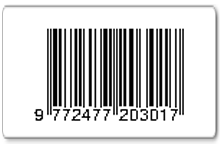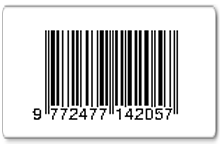Engaging STEM Education for High School Student in Japan: Exploration of Perception to Engineer Profession
Abstract
While Science-Technology-Engineering-Mathematics (STEM) education is expanding worldwide, engineering reminds as both valuable and difficult element to integrate. Understanding students’ perceptions of the engineering profession might be key to enhancing their interest in engineering careers in the future and insight to science educators who demand to develop more STEM activities in their classroom. In our framework, a case study was used to explore the perceptions of 16 students (aged 14-15) as they participated in STEM activities at Japan Junior High School. After participating in the activities, students completed an open-ended questionnaire about the profession. Data analysis was guided by a focus on general perceptions of engineering, the clustering of those perceptions, and discussions of how the perceptions related to the literature. Text analysis was conducted, especially in terms of frequency network and hierarchical cluster analysis. Our findings indicate that students’ perceptions were related to making or creating, technology, and machines. Five clusters of responses were found. The “design, make, develop new technology” and “solve the problem faced by society” clusters were influential. There were disparities between the students’ perceptions and the definition of engineering, especially regarding constraints and the use of science and mathematics concepts.
Keywords
Full Text:
PDFReferences
Abdulwahed, M. & Hasna, M.O., 2017, ‘The role of engineering design in technological and 21st century competencies capacity building: Comparative case study in the Middle East, Asia, and Europe’, Sustainability (Switzerland), vol.9, no. 4.
Arima, A 2015, Science World 3rd grade Junior High School Textbook, Dainippontosho, Tokyo.
Bagiati, A. & Evangelou, D 2015, ‘Engineering curriculum in the preschool classroom: the teacher’s experience’, European Early Childhood Education Research Journal, vol. 23, no. 1, pp. 112–28.
Brand, B., Glasson, G. & Green, A 2010, ‘Sociocultural Factors Influencing Students’ Learning in Science and Mathematics: An Analysis of the Perspectives of African American Students’, School Science and Mathematics, vol. 106, pp. 228–36.
Brandes, A., 2001, ‘Faster Algorithm for Betweenness Centrality’, Journal of Mathematical Sociology, vol. 25, no. 2, pp. 163–67.
Bullmore, E. & Sporns, O., 2009, ‘Complex brain networks: graph theoretical analysis of structural and functional systems’, Nature Reviews Neuroscience, vol. 10, pp. 186–98.
Capobianco, B.M., Diefes-Dux, H.A., Mena, I. & Weller, J 2011, ‘What is an engineer? Implications of elementary school student conceptions for engineering education’, Journal of Engineering Education, vol. 100, no. 2, pp. 304-28.
Chalkiadaki, A 2018, ‘A systematic literature review of 21st century skills and competencies in primary education’, International Journal of Instruction, vol. 11, no. 3, pp. 1–16.
Chu, S.K.W., Reynolds, R.B., Tavares, N.J., Notari, M. & Lee, C.W.Y 2016, ‘21st century skills development through inquiry-based learning: From theory to practice’, 21st Century Skills Development Through Inquiry-Based Learning: From Theory to Practice, (January), 1–204.
Corbett, K. & Coriell, J 2013, ‘STEM explore, discover, apply - Elective courses that use the engineering design process to foster excitement for STEM in middle school students’, Proceedings - Frontiers in Education Conference, FIE, 1108–10.
Doko Gjonbalaj, Q 2018, ‘Engineering Mathematics and Modern Technology’, International Journal of Educational Technology and Learning, vol. 2, no. 8–13.
English, L.D. & King, D.T 2015, ‘STEM learning through engineering design: fourth-grade students’ investigations in aerospace’, International Journal of STEM Education, vol. 2, no.1.
Fralick, B., Kearn, J., Thompson, S. & Lyons, J 2009, ‘How middle schoolers draw engineers and scientists’, Journal of Science Education and Technology, vol. 18, no. 1, pp. 60–73.
Goold, E. & Devitt, F 2012, ‘The role of mathematics in engineering practice and in the formation of engineers’, Proceedings of the 40th SEFI Annual Conference 2012 - Engineering Education 2020: Meet the Future.
Gries, S.T 2015, International Encyclopedia of the social & behavioural sciences, 2nd edn.
Griethuijsen, R.A.L.F. van, Eijck, M.W. van, Haste, H., Brok, P.J. den, Skinner, N.C., Mansour, N., Gencer, A.S. & BouJaoude, S 2015, ‘Global patterns in students’ views of science and interest in science’, Research in Science Education, vol. 45, no. 4, pp. 581–603.
Hammack, R., Ivey, T.A., Utley, J. & High, K.A 2015, ‘Effect of an engineering camp on students’ perceptions of engineering and technology’, Journal of Pre-College Engineering Education Research, vol. 5, no. 2, pp. 10–21.
Harada, Y., Sakamoto, K. & Suzuki, M 2018, ‘When and Why Have Lower Secondary School Students Disliked Science Learning?: A Basic Study Based on Expectancy-Value Theory’, Journal of Research in Science Education, vol. 58, pp. 319–30.
Hartini, S., Mariani, I., Misbah, Sulaeman, N.F 2020, 'Developing of students worksheets through STEM approach to train critical thinking skills', Journal of Physics: Conference Series.
Heisig, J.W 2007, Remembering the Kanji I, 6th edn., vol. I, University oh Hawaii, Honolulu.
Higuchi, K., 2016a, ‘A two-Step Approach to Quantitative Content Analysis: KH Coder Tutorial using Anne of Green Gables (Part I)’, Retsumeikan Social Science Review, vol. 52, no. 3, pp. 77–90.
Higuchi, K 2016b, KH Coder, Ritsumeikan University, Kyoto.
Honey, M., Pearson, G. & Schweingruber, H 2014, STEM Integration in K-12 Education, National Research Council, Washington D.C.
Ishikawa, M., Fujii, S. & Ashlyn, M 2013, ‘Securing Australia’s Future STEM: Country Comparisons’.
Kasulis, T 2019, Japanese Philosophy, The Stanford Encyclopedia of Philosophy, Stanford.
Kelley, T. & Knowles, J 2016, ‘A conceptual framework for integrated STEM education’, International Journal of STEM Education, pp. 3.
Kenneth, H.G., 2004, A History of Japan, 2nd edn.
Khuyen, TTN, Bien, NV, Lin, P, Lin, J, Chang, C, 2020, 'Measuring teachers' perceptions to sustain STEM education development', Sustainability, vol. 12, no. 4
Lee, M.H., Chai, C.S. & Hong, H.Y 2019, ‘STEM Education in Asia Pacific: Challenges and Development’, Asia-Pacific Education Researcher, vol. 28, no. 1, pp. 1–4.
Li, T., Bai, J., Yang, X., Liu, Q. & Chen, Y 2018, ‘Co-occurrence network of high-frequency words in the bioinformatics literature: Structural characteristics and evolution’, Applied Sciences (Switzerland), vol. 8, no. 10, pp. 1–14.
Low, M 2001, ‘From Einstein to Shirakawa: The Nobel Prize in Japan’, Minerva, vol. 39, no. 4, pp. 445–60.
Maruyama, E 2000, ‘A Historical Look at Technology and Society in Japan ( 1500-1900 )’, JSAP International, vol. 1, no. 1, pp. 22–5.
Miaoulis, I 2010, ‘K-12 Engineering – the Missing Core Discipline’, in B.M.B. Grasso D. (ed.), Holistic Engineering Education, New York.
Mutakinati, L., Kumano, Y 2018, Analysis of students' critical thinking skill of middle school through STEM education project-based learning, Jurnal Pendidikan IPA Indonesia.
Mohtar, L.E., Halim, L. & Rahman, N.A 2019, ‘A Model of Interest in Stem Careers Among Secondary School Issn 1648-3898 Issn 2538-7138 a Model of Interest in Stem Careers Among Secondary’, Journal of Baltic Science Education, pp. 404–16.
Moore, T. J., Stohlmann, M. S., Wang, H. H., Tank, K. M., Glancy, A. W., & Roehrig, G.H 2014, Implementation and integration of engineering in K-12 STEM education. In Engineering in pre-college settings: Synthesizing research, policy, and practices.
Naganuma, S., 2015, ‘A Study of Research Trends in “Decline in Students’ Positive Attitude toward Science”: Focusing on Its Current Conditions and Causes’, Journal of Science Education in Japan, vol. 39, no. 2, pp. 114–23.
Ngan, LHM., Hien, N. V, Hoang, L.H., Hai, N.D., Bien, NV 2020, ‘Exploring Viet namese Students ’ Participation and Perceptions of Science Classroom Environment in STEM Education Context’, Jurnal Penelitian dan Pembelajaran IPA, vol. 6, no. 1, pp. 73–86.
Paranyushkin, D., 2011, ‘Identifying the Pathways for Meaning Circulation using Text Network Analysis’, Nodus Labs, (December), 26.
Partnership for 21st Century learning, 2009, ‘21st CENTURY STUDENT OUTCOMES’, 1–9.
Priemer, B., Eilerts, K., Filler, A., Pinkwart, N., Rösken-Winter, B., Tiemann, R. & Zu Belzen, A.U 2020, ‘A framework to foster problem-solving in STEM and computing education’, Research in Science & Technological Education, vol. 38, no. 1, pp. 105–30.
Sadler, P.M., Sonnert, G., Hazari, Z. & Tai, R 2012, ‘Stability and volatility of STEM career interest in high school: A gender study’, Science Education, vol. 96, no. 3, pp. 411–27.
Sakata, S. & Kumano, Y 2018, ‘Attempting STEM Education in Informal Japanese Educational Facilities Through the Theme of " Sand "’, vol. 4, no. 4, pp. 401–11.
Shanahan, M.-C. & Nieswandt, M 2011, ‘Science student role: Evidence of social structural norms specific to school science’, Journal of Research in Science Teaching, vol. 48, no. 4, pp. 367–95.
Strimel, G. & Grubbs, M 2016, ‘Positioning Technology and Engineering Education as a Key Force in STEM Education.’, Journal of Technology Education, vol. 27, no. 2, pp. 21–36.
Suto, I. & Eccles, H 2014, ‘The Cambridge approach to 21 st Century skills: definitions, development, and dilemmas for assessment’, IAEA Conference, 1–10.
Syukri, M., Halim, L. & Mohtar, L., 2018, ‘The Impact of Engineering Design Process in Teaching and Learning to Enhance Students’ Science Problem-Solving Skills’, Jurnal Pendidikan IPA Indonesia, vol. 7.
Tullis, T. & Albert, B 2013, Measuring the user experience: collecting, analyzing and presenting usability metrics, 2nd edn., Elsevier.
Verdín, D., Godwin, A. & Ross, M 2018, ‘Stem roles: How students’ ontological perspectives facilitate stem identities’, Journal of Pre-College Engineering Education Research, vol. 8, no. 2, pp. 31–48.
Wang, M.-T., Guo, J. & Degol, J 2019, ‘The Role of Sociocultural Factors in Student Achievement Motivation: A Cross-Cultural Review’, Adolescent Research Review.
Whitworth, B.A. & Wheeler, L.B 2017, ‘Is it Engineering or Not?’, The Science Teacher, vol. 84, no. 5, pp. 25–29.
Wieselmann, J.R., Dare, E.A., Ring-Whalen, E.A. & Roehrig, G.H 2019, ‘“I just do what the boys tell me”: Exploring small group student interactions in an integrated STEM unit’, Journal of Research in Science Teaching.
Wieselmann, J.R., Keratithamkul, K., Dare, A. D., Ring-Whalen, E.A., Roehrig, G.H 2020, 'Discource analysis in integrated STEM activities: Methods for Examining Power and Positioning in Small Group Interactions, Research in Science Education.
Woods-McConney, A., Wosnitza, M. & Sturrock, K.L 2016, ‘Inquiry and groups: student interactions in cooperative inquiry-based science’, International Journal of Science Education, vol. 38, no. 5, pp. 842–60.
Yin, R.K 2014, Case study research: Design and methods, Fifth, SAGE, Los Angeles.
DOI: http://dx.doi.org/10.30870/jppi.v6i2.8449
Refbacks
- There are currently no refbacks.
Copyright (c) 2020 Jurnal Penelitian dan Pembelajaran IPA

This work is licensed under a Creative Commons Attribution 4.0 International License.
Jurnal Penelitian dan Pembelajaran IPA is licensed under a Creative Commons Attribution 4.0 International License
Copyright © 2025 Jurnal Penelitian dan Pembelajaran IPA. All rights reserved.






